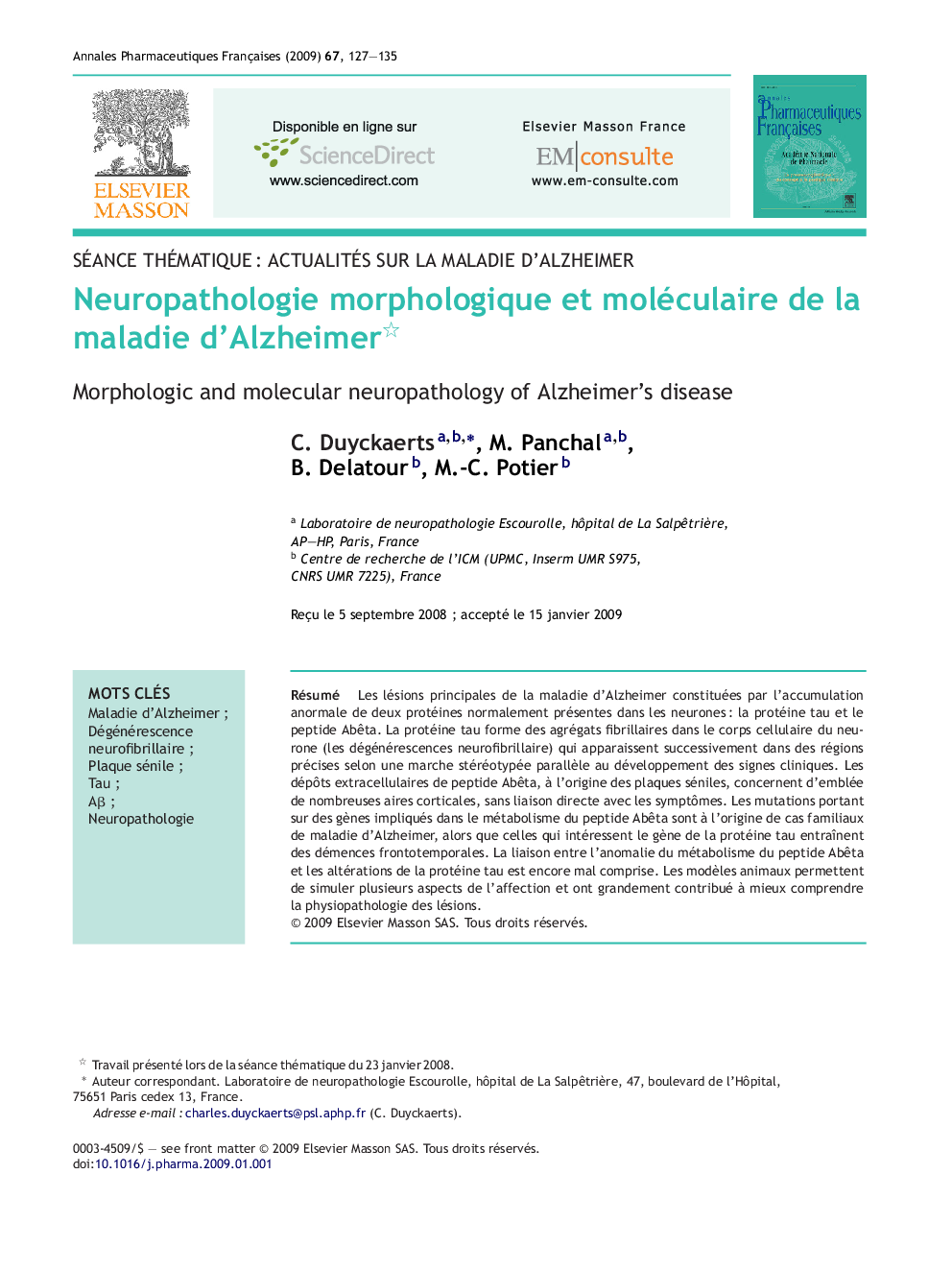| Article ID | Journal | Published Year | Pages | File Type |
|---|---|---|---|---|
| 2478284 | Annales Pharmaceutiques Françaises | 2009 | 9 Pages |
Abstract
Alzheimer disease lesions include the abnormal accumulation of two proteins normally present in neurons: tau protein and Aβ peptide. Tau protein aggregates into fibrils in the cell body of neurons (neurofibrillary tangles), in dendrites (neuropil threads) and in degenerating axons that constitute the corona of the senile plaque. Tau pathology progresses in the brain areas in a stereotyped manner and in parallel with the clinical symptoms. Aβ extracellular deposits may be diffuse or focal. The Aβ focal deposit constitutes the core of the senile plaque. Progression of the Aβ lesions, which initially affect the isocortex, then the hippocampus, basal ganglia, various brainstem nuclei and cerebellum, is not directly correlated with symptoms. Mutations involving the genes implicated in Aβ peptide metabolism are responsible for familial Alzheimer disease. Mutations of the tau gene are not associated with Alzheimer disease but with frontotemporal dementia. The link between altered Aβ peptide metabolism and tau pathology has not been fully elucidated. Animal models mimic several aspects of the disease and have contributed to a better understanding of the mechanisms of the lesions.
Keywords
Related Topics
Health Sciences
Pharmacology, Toxicology and Pharmaceutical Science
Drug Discovery
Authors
C. Duyckaerts, M. Panchal, B. Delatour, M.-C. Potier,
